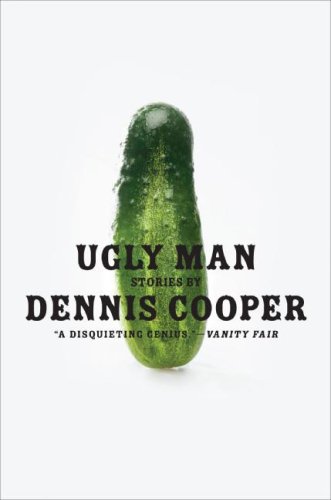 This is an album by Creation Books founder James Williamson under his pen name James Havoc (the guy who gets killed and brought back to life every time there’s a cash cow to milk). It is based on Raism, a rather extreme novella written in chaotic pseudoprose, and Church of Raism aims to be music to the same effect. It aims, but doesn’t hit.
This is an album by Creation Books founder James Williamson under his pen name James Havoc (the guy who gets killed and brought back to life every time there’s a cash cow to milk). It is based on Raism, a rather extreme novella written in chaotic pseudoprose, and Church of Raism aims to be music to the same effect. It aims, but doesn’t hit.
Church of Raism only wants to be irritating noise, but James Havoc isn’t good enough at making irritating noise. Chaos can be interesting if it’s controlled chaos (a paradox?) – marshalled and micromanaged by an expert. This, unfortunately, is the other sort: a person who lacks talent and thinks impulsive spasms of creativity are a substitute.
“Death to Pussycat” sets the tone, dissonant rhythms snaking out of a sea of fuzz and what sounds like a Donald Duck cartoon. “Caustic Descent” has Havoc reading some of his writing (“an anal pact with demons…”) in the voice of a page boy who has been lectured to mind his manners, and the effect is unintentionally comic.
“Night Scar” has female vox and acoustic guitar playing and lots of distorted noise – if you liked the early White Zombie albums you’d dig parts of this, it’s definitely influenced by 80s noise rock. The other songs stick to a similar formula: destructive noise juxtaposed with spoken word sections and incongruous shards of melody.
There’s not much thought put into anything here, that’s my principle complaint. Everything sounds random and witless. There will shortly be computer algorithms capable of making albums like Church of Raism. This isn’t a horrifying look into the mind of a madman. It’s a horrifying look into the mind of someone fiddling with discount recording gear he bought at Fisher and Paykel.
The final song is “Ditchfinder”. “The cunt of the night is bled into my mouth…” oh, shut up. 11 minutes? Seriously? I have to listen to this for 11 minutes? Can’t I go outside and be a productive citizen?
Havoc is a far better writer than he is a musician. In print, he is often forceful and disturbing. In audio, he sounds more like a child let loose at a mixing desk. Havoc was “in tight” with a few big boys in the UK indie scene – Primal Scream and Creation Records’ Alan McGee – and Church of Raism probably got more of a push than it was intended to get.
These days, the internet has restored it to its rightful place in the food chain: an EP-length musical experiment that Creation fans will check out once and will maybe check out twice but will probably not check out a third time.
No Comments »
 When reading a favoured author I feel a sensation of comfy familiarity – like I’m putting on much-worn, much-loved jacket. I don’t think I’d ever feel that about Dennis Cooper, even if he did become a favoured author. This is a collection of short prose pieces that can’t really be classified at all. The style and format changes constantly. Some pieces are short stories, others take the format of conversations or letters, others are metafictional and are presented via transcribed live performances, etc.
When reading a favoured author I feel a sensation of comfy familiarity – like I’m putting on much-worn, much-loved jacket. I don’t think I’d ever feel that about Dennis Cooper, even if he did become a favoured author. This is a collection of short prose pieces that can’t really be classified at all. The style and format changes constantly. Some pieces are short stories, others take the format of conversations or letters, others are metafictional and are presented via transcribed live performances, etc.
The book ends with an interview with the author and a list of his influences. This reads not as an afterword but as a continuation of the rest of the book. No doubt if he’d included his grocery list, it would also have seemed like a part of the book.
The quality is as unpredictable as the writing, but there are two very good moments in this collection. The first one is “The Guro Artist”, about a pederastic lunatic who kidnaps a boy with “an ass too exquisite to waste its whole life squeezing out shits” and surgically remakes him into a living anime character. It goes for only three pages but is as disturbing and horrible as anything I’ve read.
Following straight after is “The Anal-Retentive Line Editor” a series of letters to a gay erotica writer from a magazine editor from hell (or maybe Sodom). (“…my big dick [Bland, de rigueur. Perhaps ‘gigantic,’ ‘monster,’ ‘humongous’? You could also indicate whether it is circumcised or not. Is the dick leaking seminal fluid? If so, that would add some pizzazz]“). One of the longest things in the book but far and away the funniest.
The other stories I can take or leave. A comparison to Burroughs seems obligatory, but only because of the gay sex – the actual prose is more redolent of authors like Palahniuk. There’s some disquietening stuff in here, but much of it is adulterated with comedy, and your default expression while reading is one of amused horror.
“Ugly Man” is about a man with a debilitating disease that renders him hideous to the eye. He copes by sleeping with lots of male prostitutes. “The Brainiacs” is about a kid deciding to become a terrorist. Being a jihadist on a holy war doesn’t make you immune from being a loser who gets picked on.
The longer works, “Anal-Retentive” aside, are not very interesting. The opening story “Jerk” feels like reading Bret Easton Ellis’s American Psycho, a basic idea made into a very long tale, and your boredom rises with the body count. “Oliver Twink” is the same. It occupies a ton of pages and doesn’t really pay for its keep. “Three Boys Who Thought Experimental Fiction Was For Pussies” has lots of gay innuendo, but I found it boring.
If you want good, discerning fiction…well, I’m afraid Dennis Cooper doesn’t much care what you want. This collection is what it is. There are no rules, and no limits. Reading it makes me feel like a windcock blown every way but loose.
No Comments »
 Black metal should have stopped here. Welcome to Hell is nasty, vituperative, and evil, but lots of bands have copied its tricks over the years, usually without adding anything to them, and the result is one of metal’s more annoying subgenres. Welcome to Hell is a comedian delivering a punch-line. Modern black metal is that same comedian rambling on uselessly after he’s gotten his big laugh.
Black metal should have stopped here. Welcome to Hell is nasty, vituperative, and evil, but lots of bands have copied its tricks over the years, usually without adding anything to them, and the result is one of metal’s more annoying subgenres. Welcome to Hell is a comedian delivering a punch-line. Modern black metal is that same comedian rambling on uselessly after he’s gotten his big laugh.
It has overdistorted guitars, a bass tone that sounds like a metal bat being destroyed by an angle grinder, and lyrics about satanism etc delivered in a self-conscious, humorous way. Venom don’t take themselves very seriously, unlike most of the bands they’ve inspired. All they do here is rock out and have fun.
Some bands have songwriting, but Venom has something more akin to songscribbling or songdoodling. None of them know a single damn thing about music, they’re all just making it up as they go along. As a result, they ignore a lot of common sense songwriting tricks. The title track begins with That Omnipresent Metal Riff (“Flash Rocking Man” by Accept, “Overnight Sensation” by Motorhead, “Fly to the Rainbow” by At Vance, “2 Minutes to Midnight” by Iron Maiden, “Midnight Chaser” by White Spirit, hundreds of others) and it sounds groovy and catchy rather than agitated, which makes the sudden resolution of the chorus feel a bit unearned. This kind of chorus is meant to dissipate tension, only here there’s no tension to dissipate – and it strikes the ear as odd. Yet, it’s an interesting effect. The way Conrad Lant and friends ignore the rulebook is part of the album’s appeal.
Most of the songs are constructed like punk rock: blisteringly fast, with as few riffs as possible, and a vocal performance that has energy and power to commend it. “One Thousand Days in Sodom” and “In League With Satan” break up the speed with an excruciating mid-tempo burn, but they are equally destructive and chaotic. Some of the songs don’t sound particularly memorable, but the impression Welcome to Hell leaves is of 39 minutes of unstoppable momentum. This album’s an irresistible force, so where’s an immovable object?
Welcome to Hell’s raw aesthetic might not have been intentional. The album was recorded in just three days, ostensibly as a demo, but the label made the decision to release it as an album, using a drawing of Conrad’s that had been used as a previous single cover.
But that too might be more power to Venom’s elbow, that they got an album out as quickly as they did. Venom’s 1981 release date is powerful cachet. A 1982 or 1983 release date would take them uncomfortably close to Slayer, and Sodom, to say nothing of Bathory (what would those bands have sounded like without Venom’s influence, though?)
Black metal is a self-loathing genre filled with people who take pride in making shitty music nobody likes and nobody listens to, but it wasn’t always this way, and Venom proves it.
No Comments »
 This is an album by Creation Books founder James Williamson under his pen name James Havoc (the guy who gets killed and brought back to life every time there’s a cash cow to milk). It is based on Raism, a rather extreme novella written in chaotic pseudoprose, and Church of Raism aims to be music to the same effect. It aims, but doesn’t hit.
This is an album by Creation Books founder James Williamson under his pen name James Havoc (the guy who gets killed and brought back to life every time there’s a cash cow to milk). It is based on Raism, a rather extreme novella written in chaotic pseudoprose, and Church of Raism aims to be music to the same effect. It aims, but doesn’t hit.

